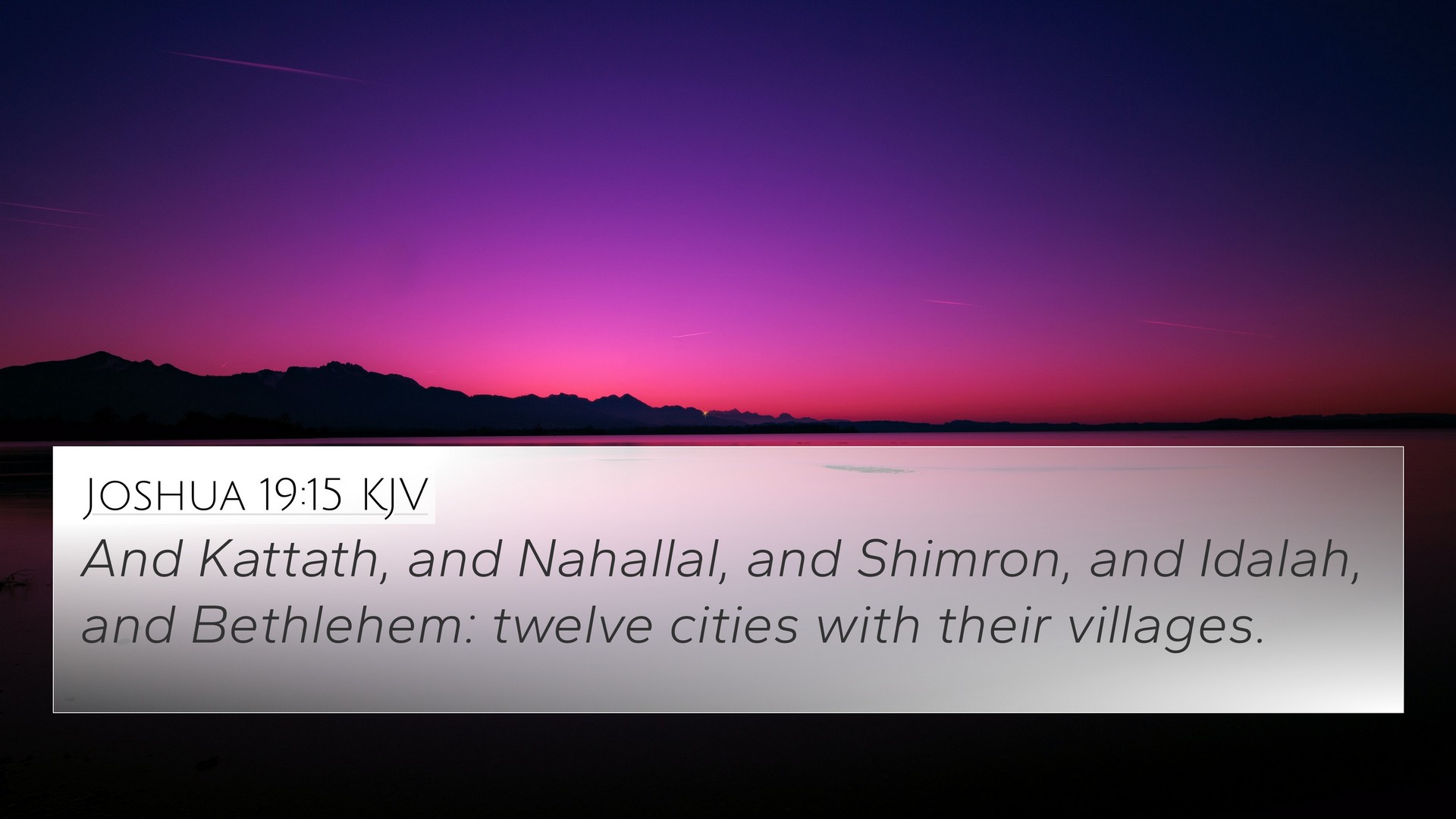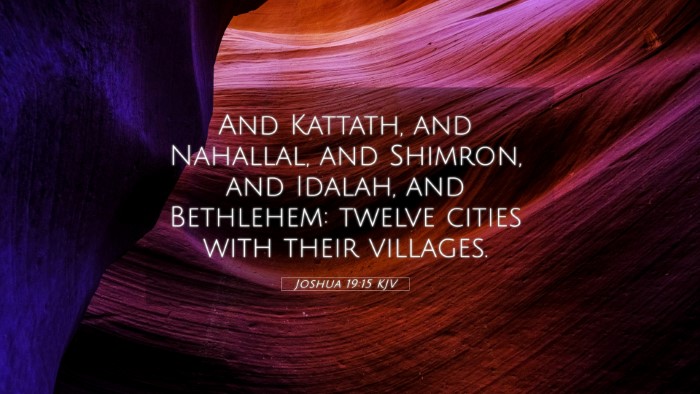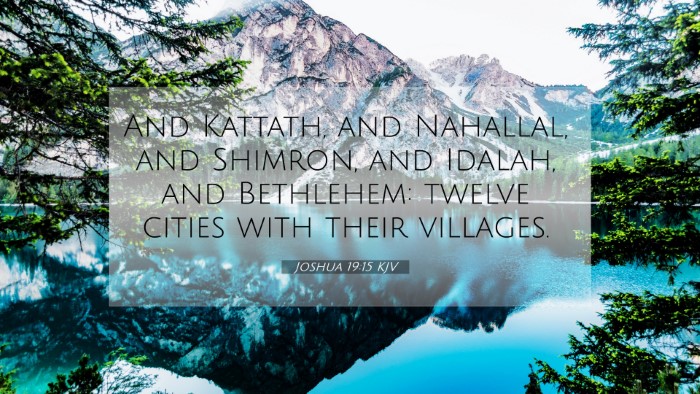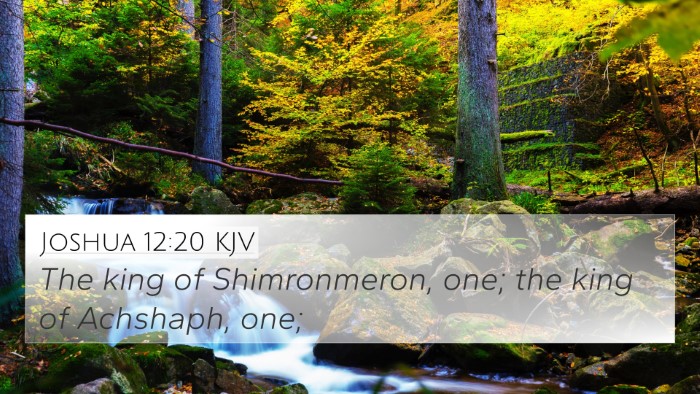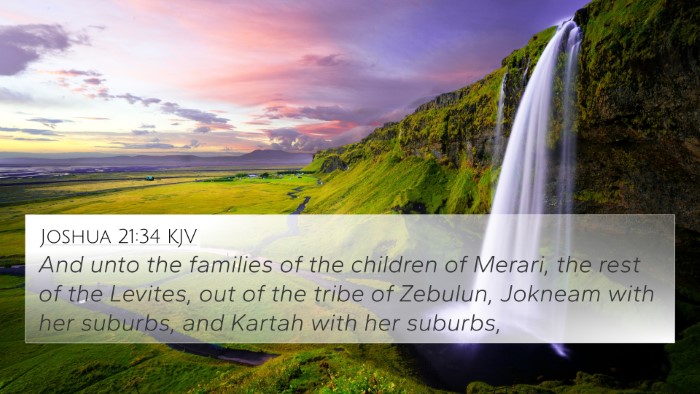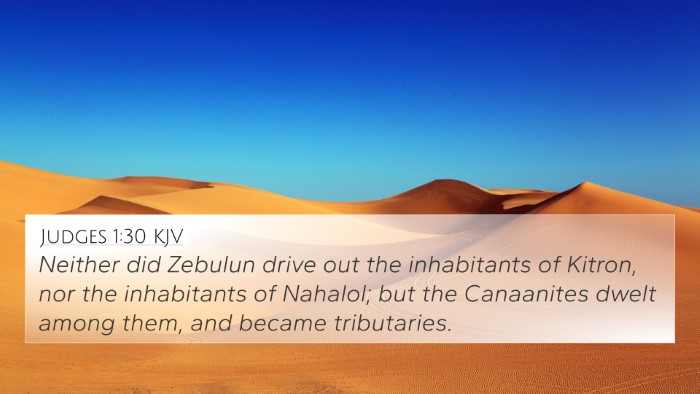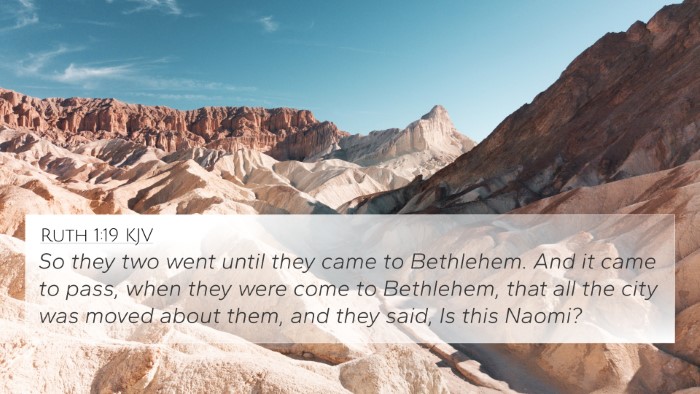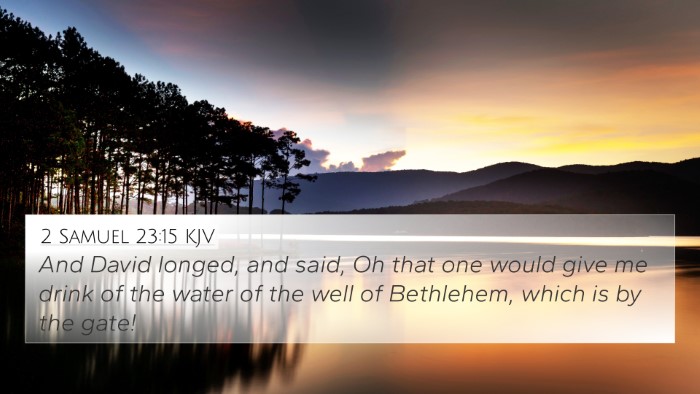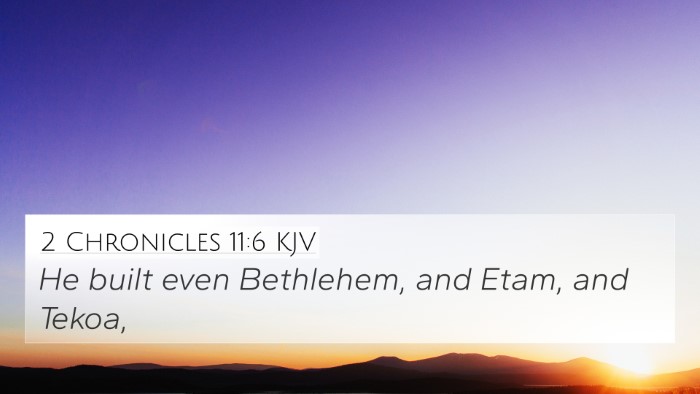Understanding Joshua 19:15
The verse Joshua 19:15 states, "And Kattath, and Nahallal, and Shimron, and Idalah, and Bethlehem: twelve cities with their villages." This passage relates to the distribution of land among the tribes of Israel and highlights the significance of these cities within the context of the Promised Land.
Interpretation of Joshua 19:15
This verse is among several that describe the allotment of territory to the tribes of Israel following their conquest of Canaan. It is important to understand the implications of these cities in the spiritual and historical narrative of Israel.
Key Insights from Commentaries
- Matthew Henry's Commentary: Henry emphasizes that the cities listed illustrate God's faithfulness in fulfilling His promises. The mention of "twelve cities" underscores the completion of the land distribution among the tribes, representing the whole of Israel’s heritage.
- Albert Barnes' Notes: Barnes points out that the names of the cities signify not just geographical locations but also the spiritual legacy associated with them. He notes that towns like Bethlehem hold profound importance in biblical prophecy and Christology.
- Adam Clarke's Commentary: Clarke provides an analysis of the historical context, indicating that such listings serve as records of the tribal allocations and as reminders of God’s provision for His people.
Thematic Connections in Scripture
This verse finds connections with various other scriptures that deal with land, heritage, and God’s promises:
- Numbers 34:17-28: This passage outlines the leaders designated for the various tribes, emphasizing God's guidance in establishing Israel's boundaries.
- Joshua 14:4: Mentions the division of land among the tribes of Joseph, which foreshadows the allotments described in Joshua 19.
- Deuteronomy 1:8: Highlights God's promise of land to the Israelites, reinforcing the importance of these allotments.
- Psalms 78:54-55: Reflects on God bringing His people into the land He promised, which includes the cities mentioned in Joshua 19:15.
- Isaiah 54:2-3: God's promise of expansion and blessing can be seen as linked to the inheritance represented by these cities.
- Micah 5:2: References Bethlehem directly, thereby connecting it to the prophetic lineage culminating in Jesus Christ.
- Matthew 2:1-6: The New Testament revelation of Bethlehem’s significance in Christ's birth provides a New Covenant perspective on the cities listed.
- Hebrews 11:8-10: Explores the faith of the patriarchs in relation to the Promised Land, ultimately making a connection to the land given to Joshua and the Israelites.
- Revelation 21:2: Envisions a city that ultimately fulfills the promise of a perfect dwelling with God, hinting at the eternal aspect of the cities like those listed in Josiah's allotment.
Applications and Reflections
In studying Joshua 19:15, we reflect on the history of God’s people and the continual revelation of His promises. The cities noted can be seen not only as historical locations but also as symbols of faith, heritage, and divine providence.
Cross-Referencing Joshua 19:15
To fully understand the implications of Joshua 19:15 within its scriptural context, one can utilize various tools for Bible cross-referencing. Here are some recommendations for engaging with the text through cross-references:
- Bible concordance: A helpful resource to trace terms and their occurrences throughout the scripture.
- Bible cross-reference guide: Useful for linking similar themes and narratives across different books of the Bible.
- Cross-reference Bible study methods: Strategies for readers to identify motifs and messages that resonate through various scriptures.
- Bible chain references: Methodically link verses based on theological themes or historical accounts.
- Comprehensive Bible cross-reference materials: Providing a deeper insight into how different biblical texts interact and inform each other.
Conclusion
The study of Joshua 19:15 is enriched through comparative Bible verse analysis and the exploration of biblical themes. By considering the interconnectedness of scriptural passages, readers gain a more profound understanding of God’s plan and promises. This verse, like many others, offers a window into the lineage of faith that sustains believers today.
